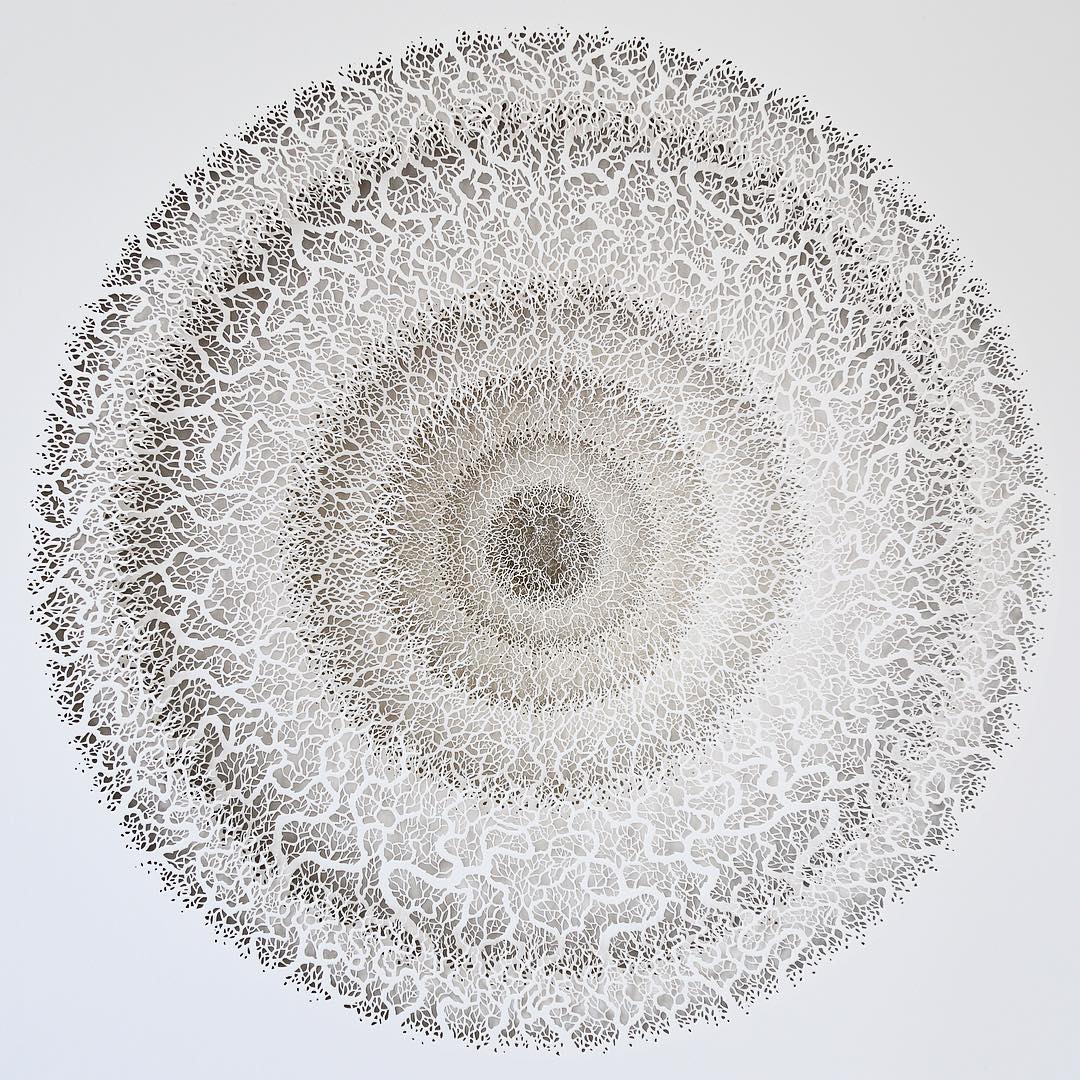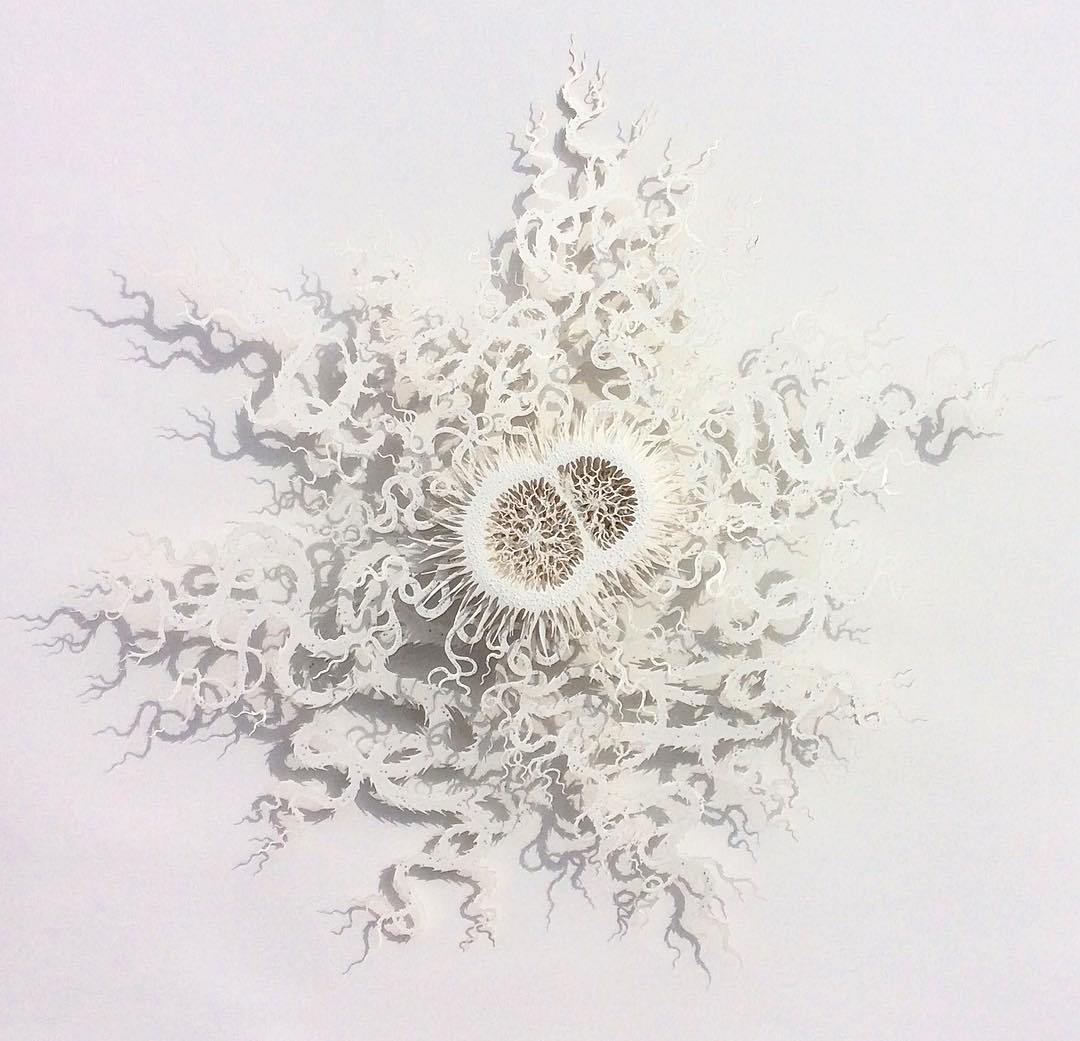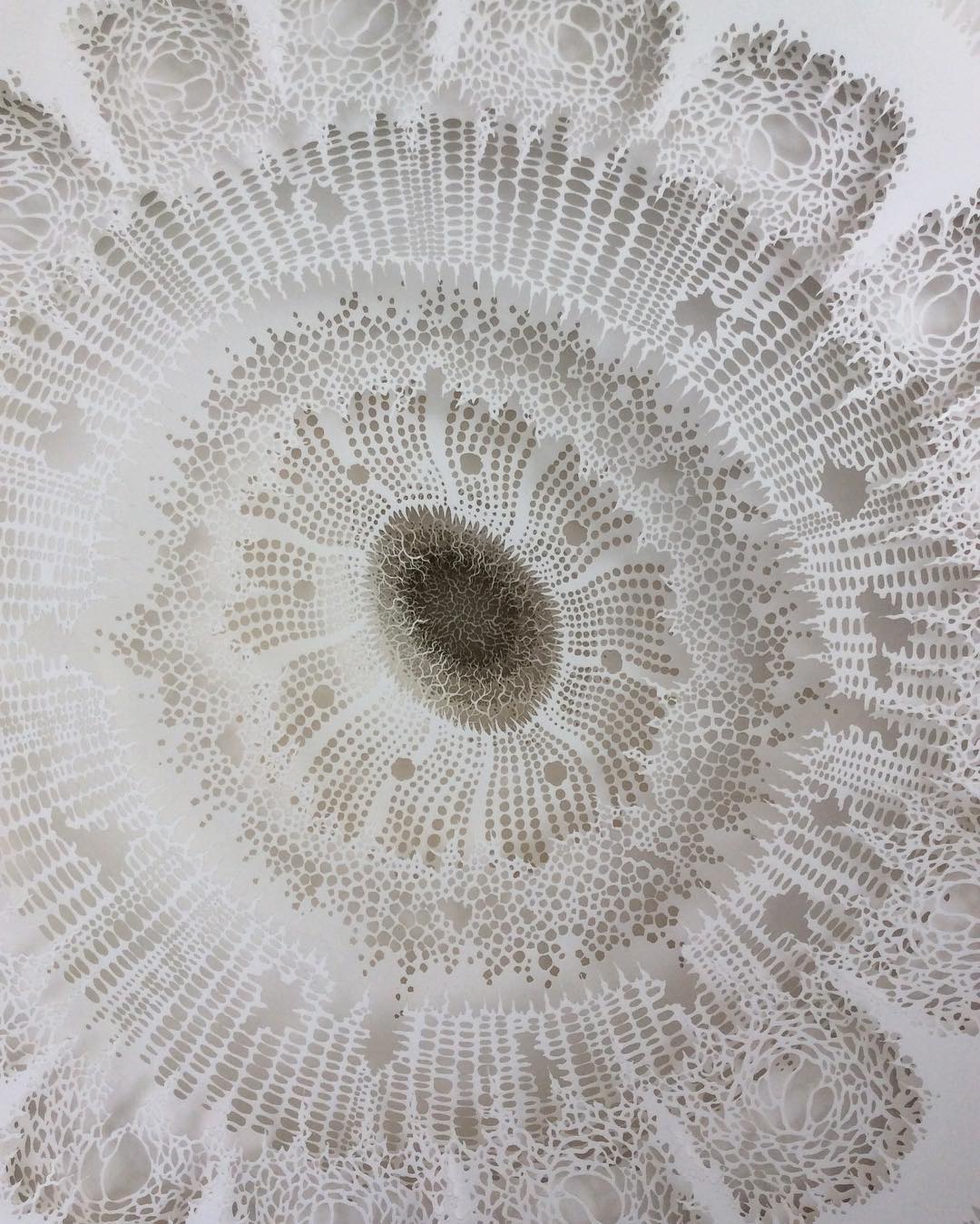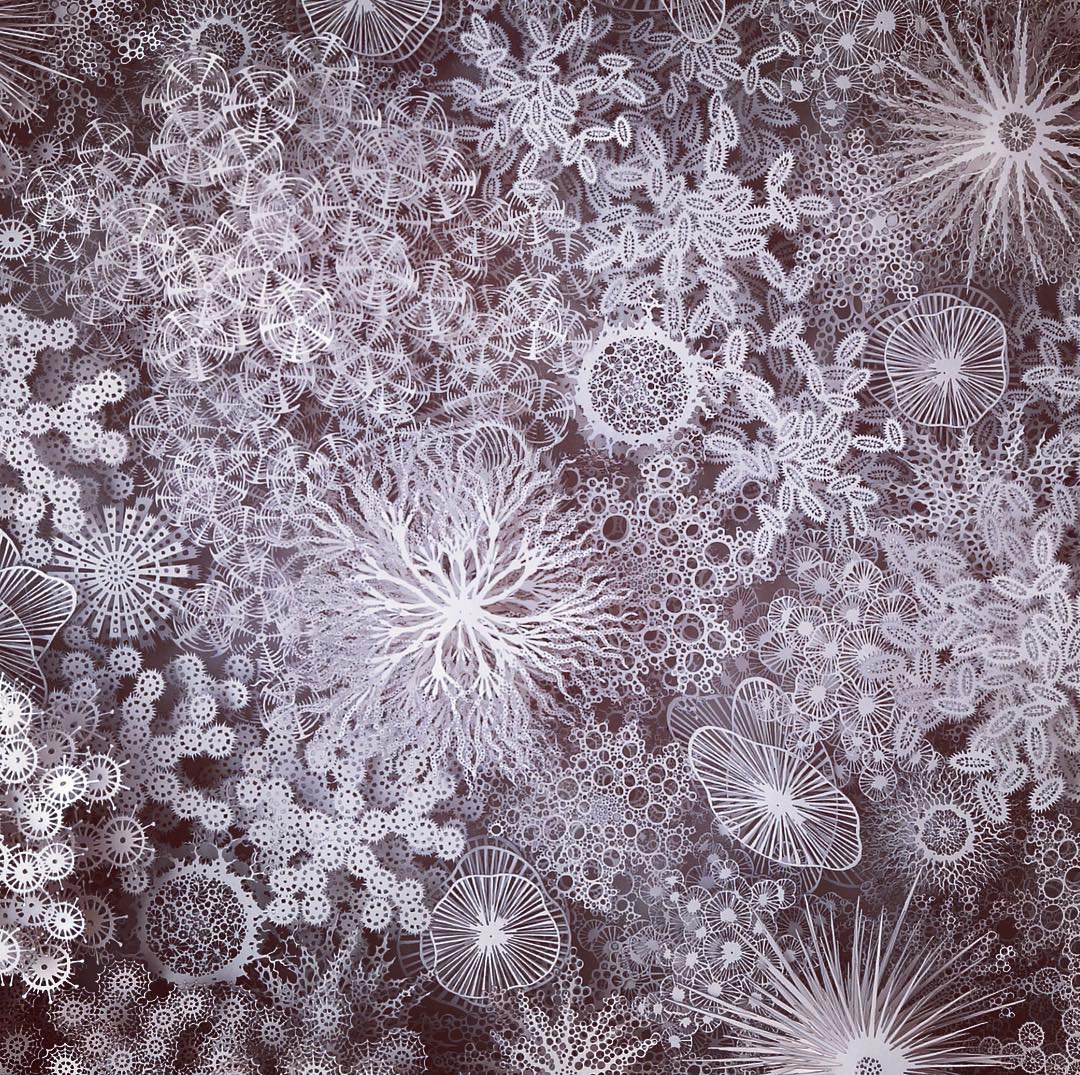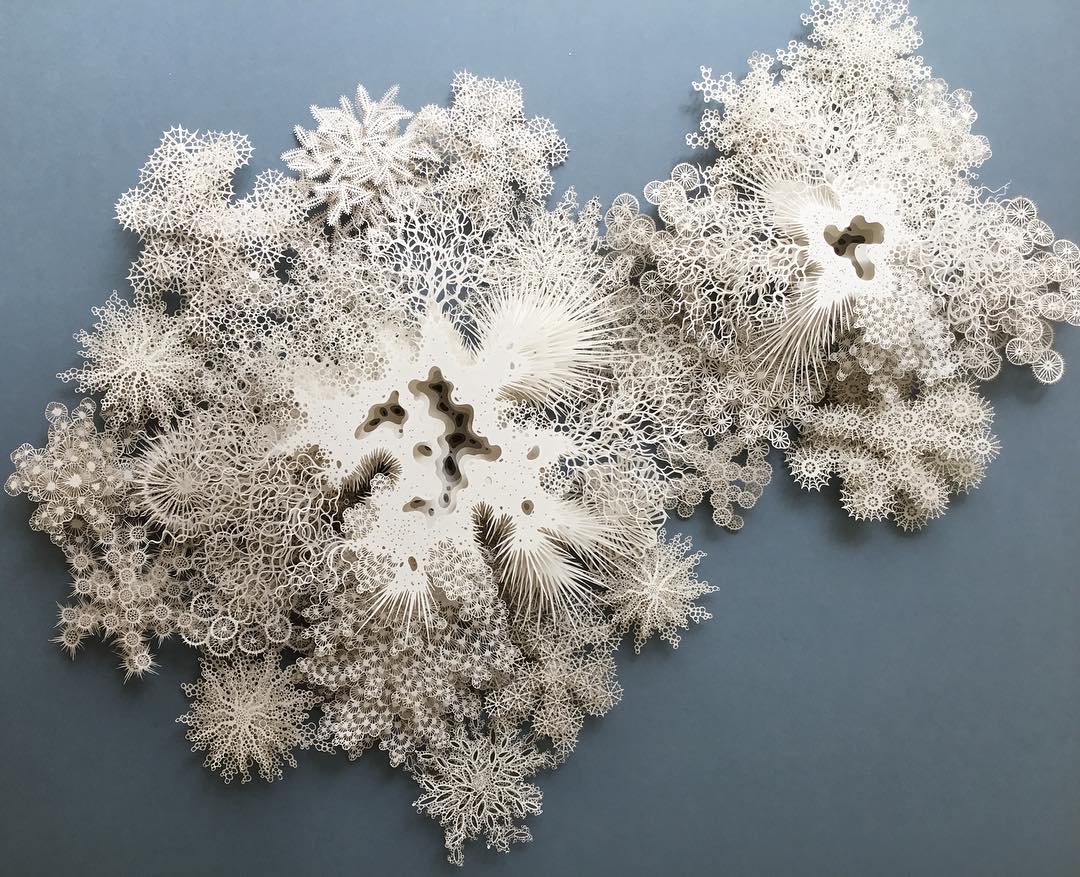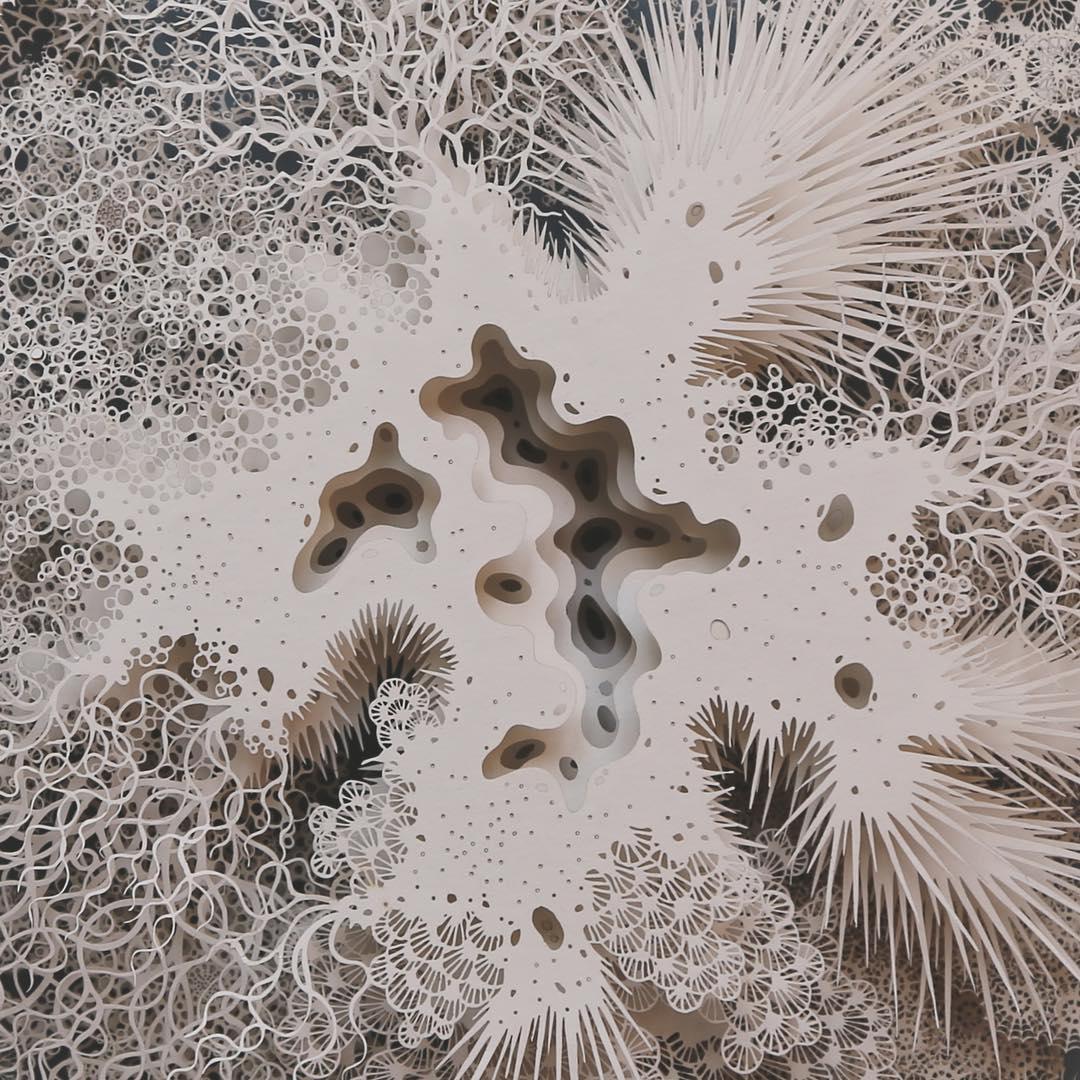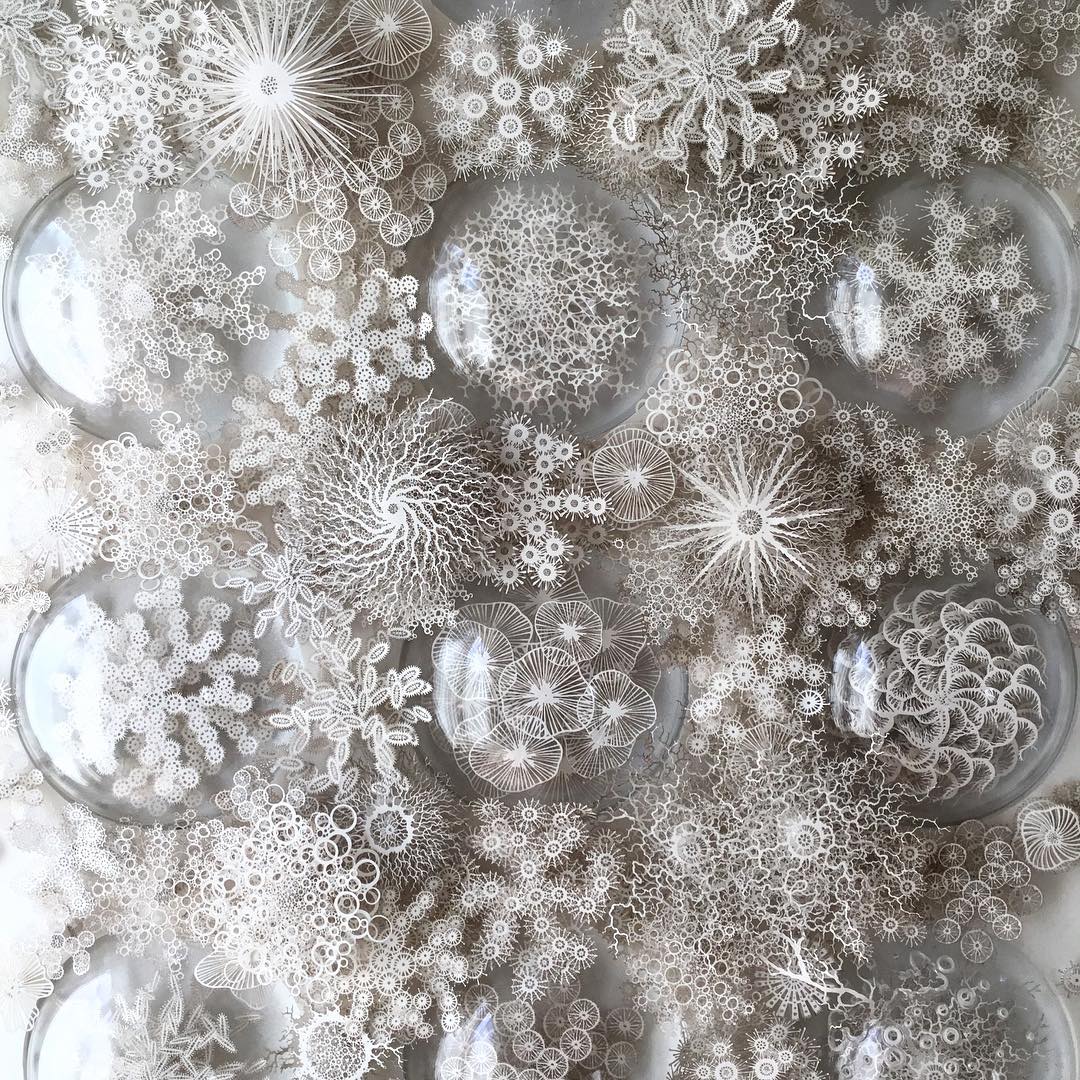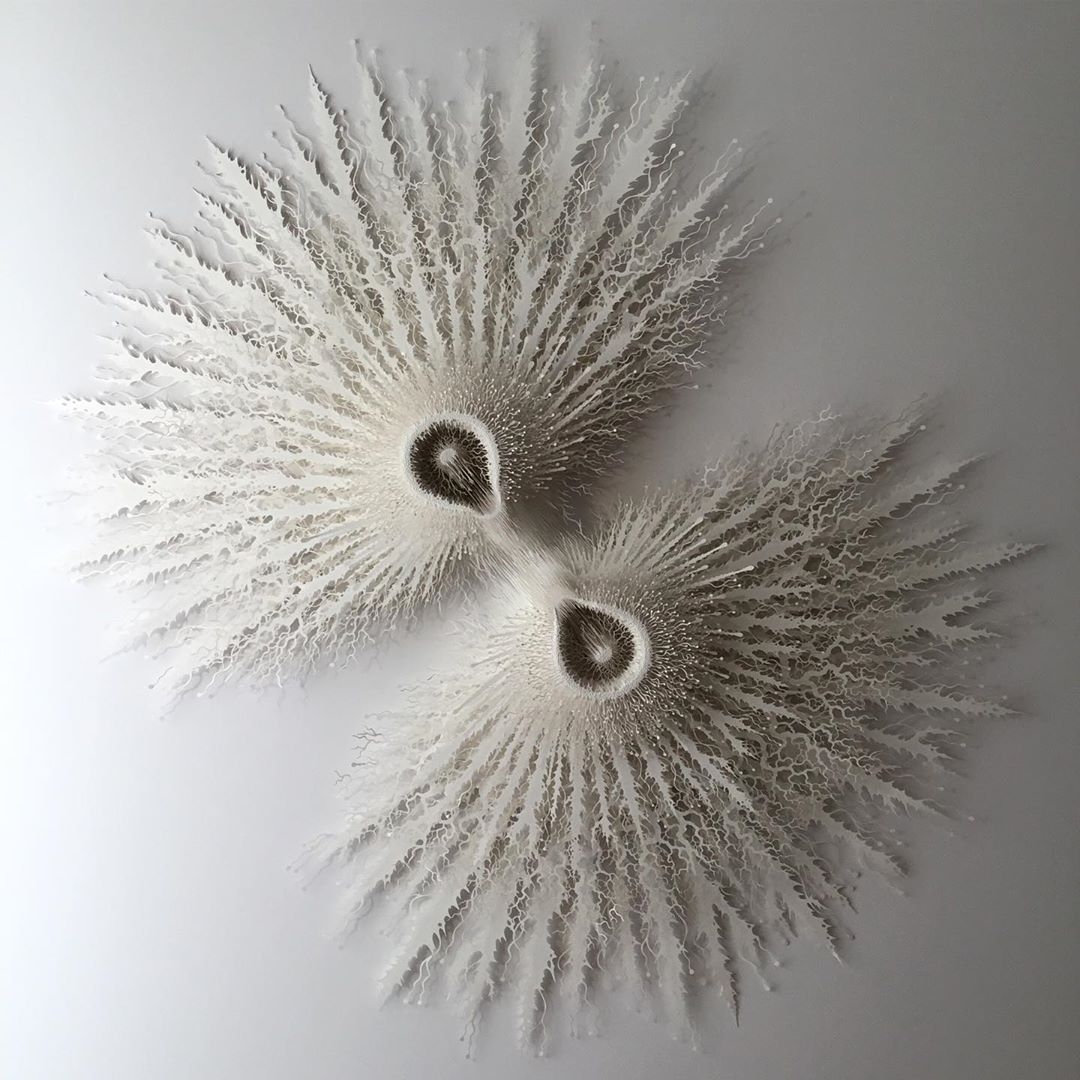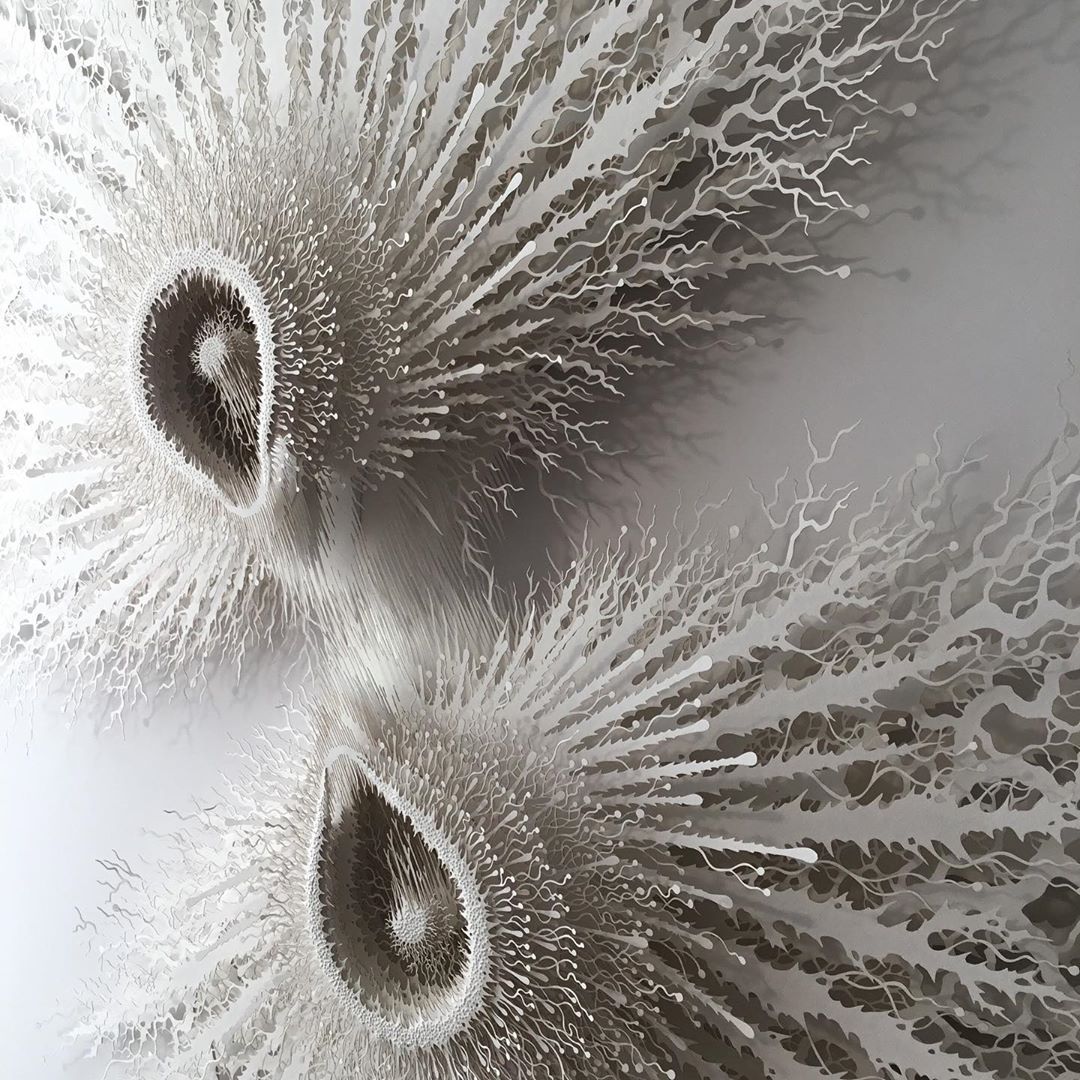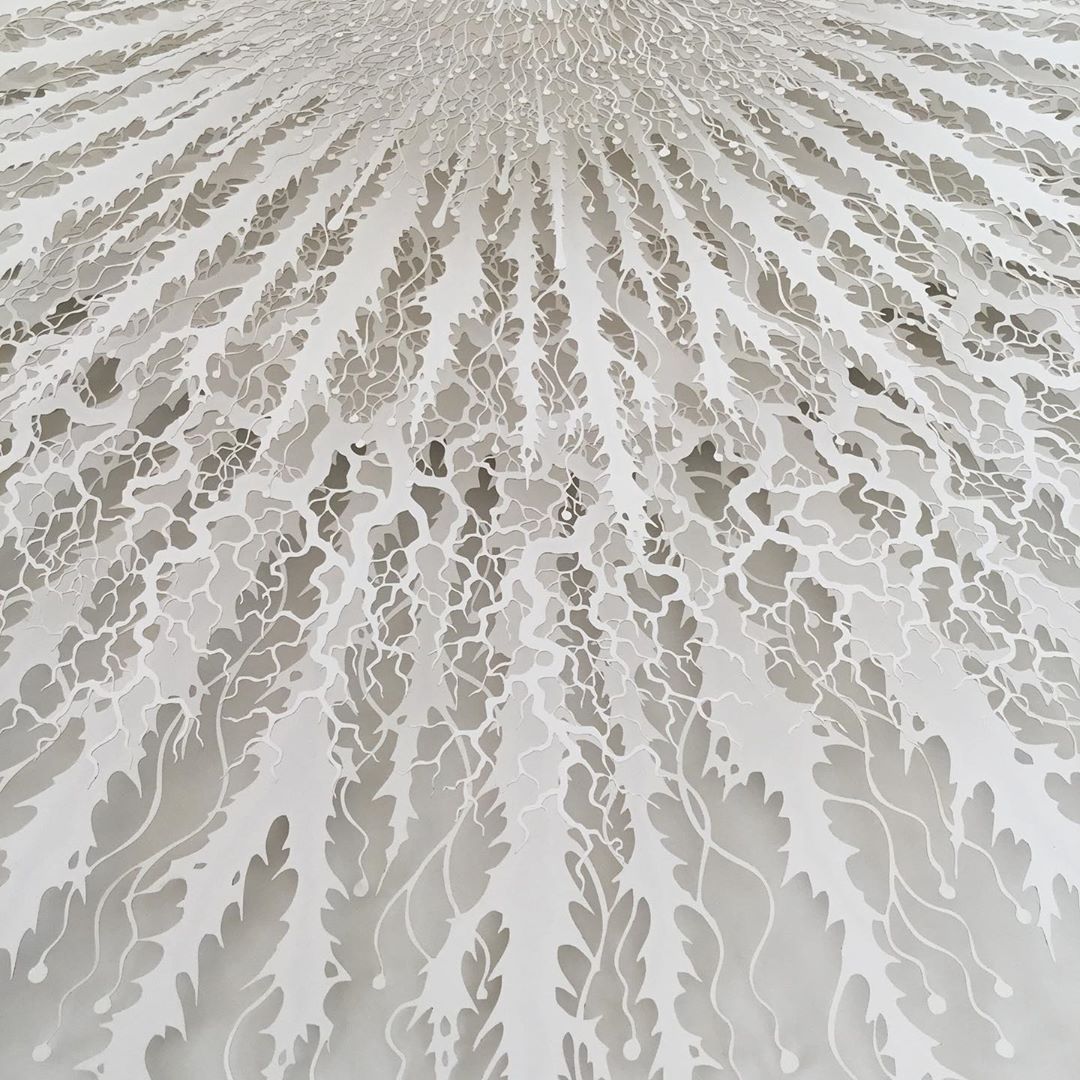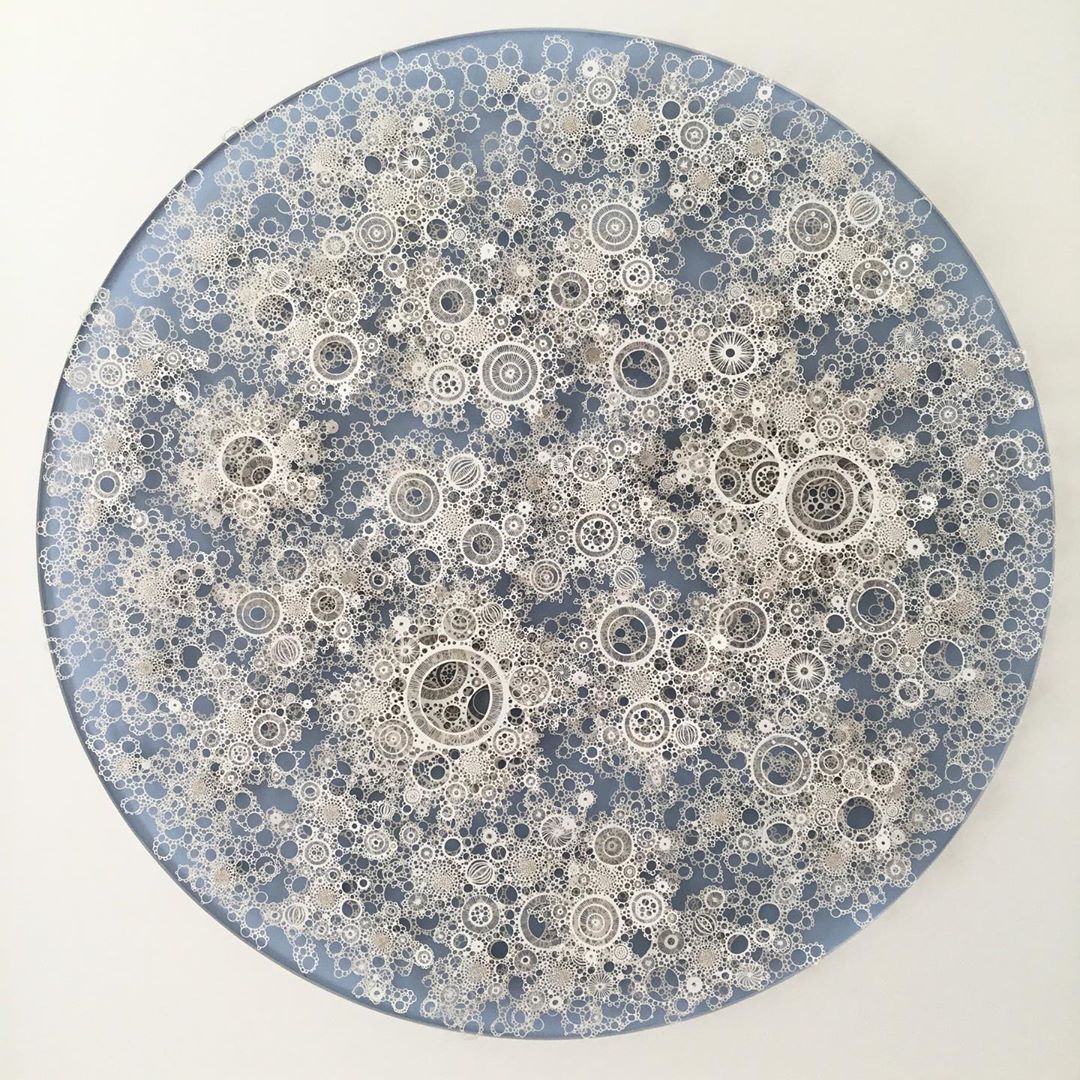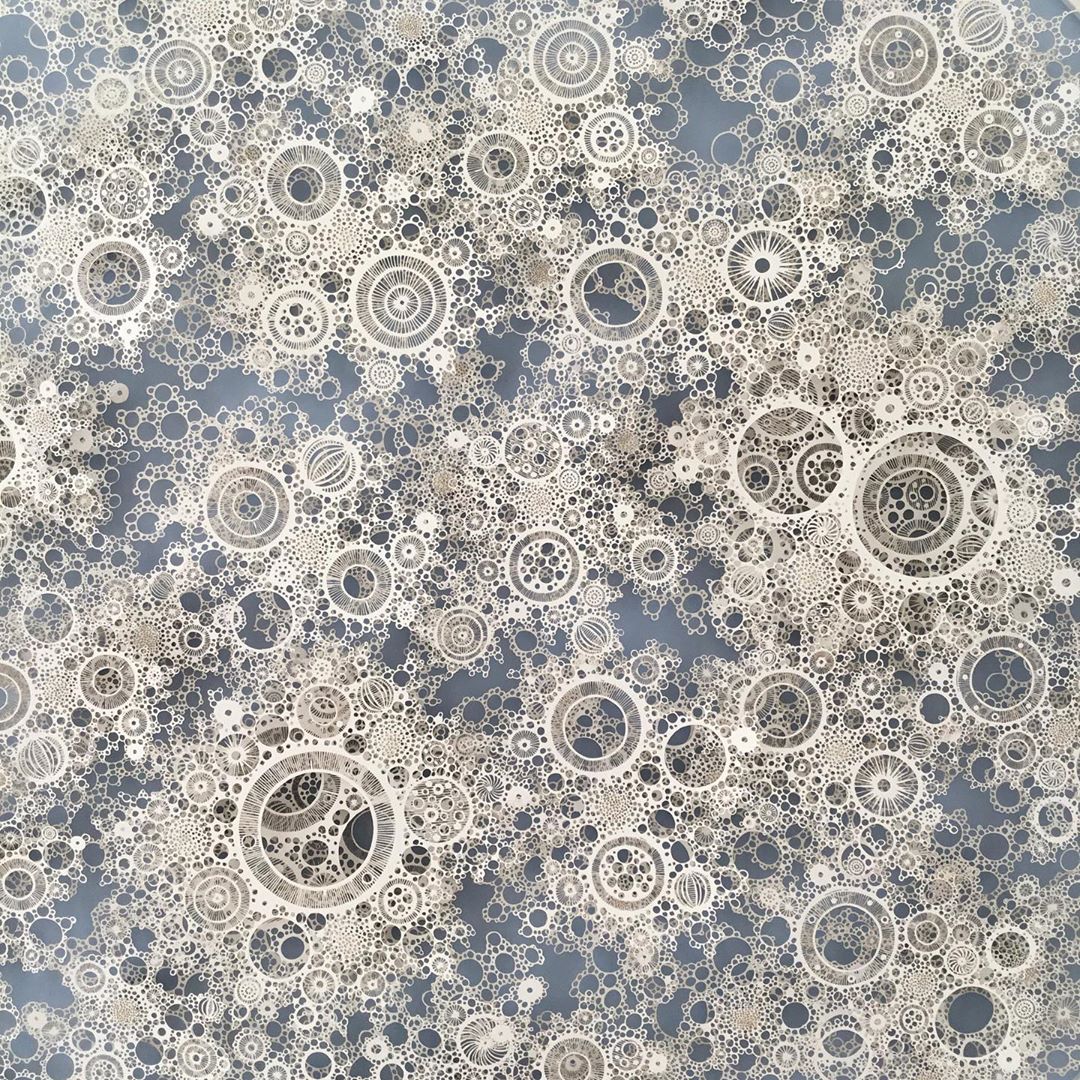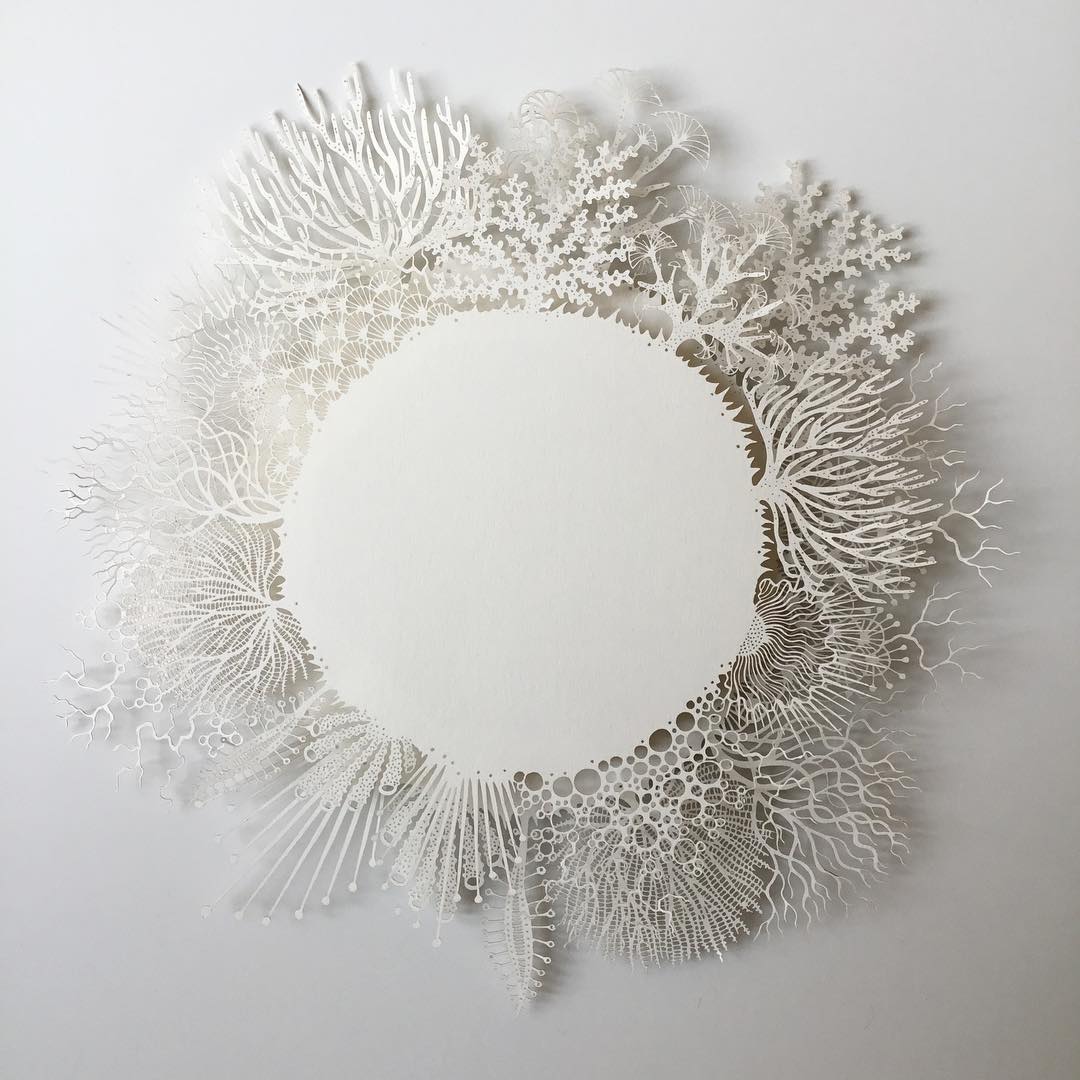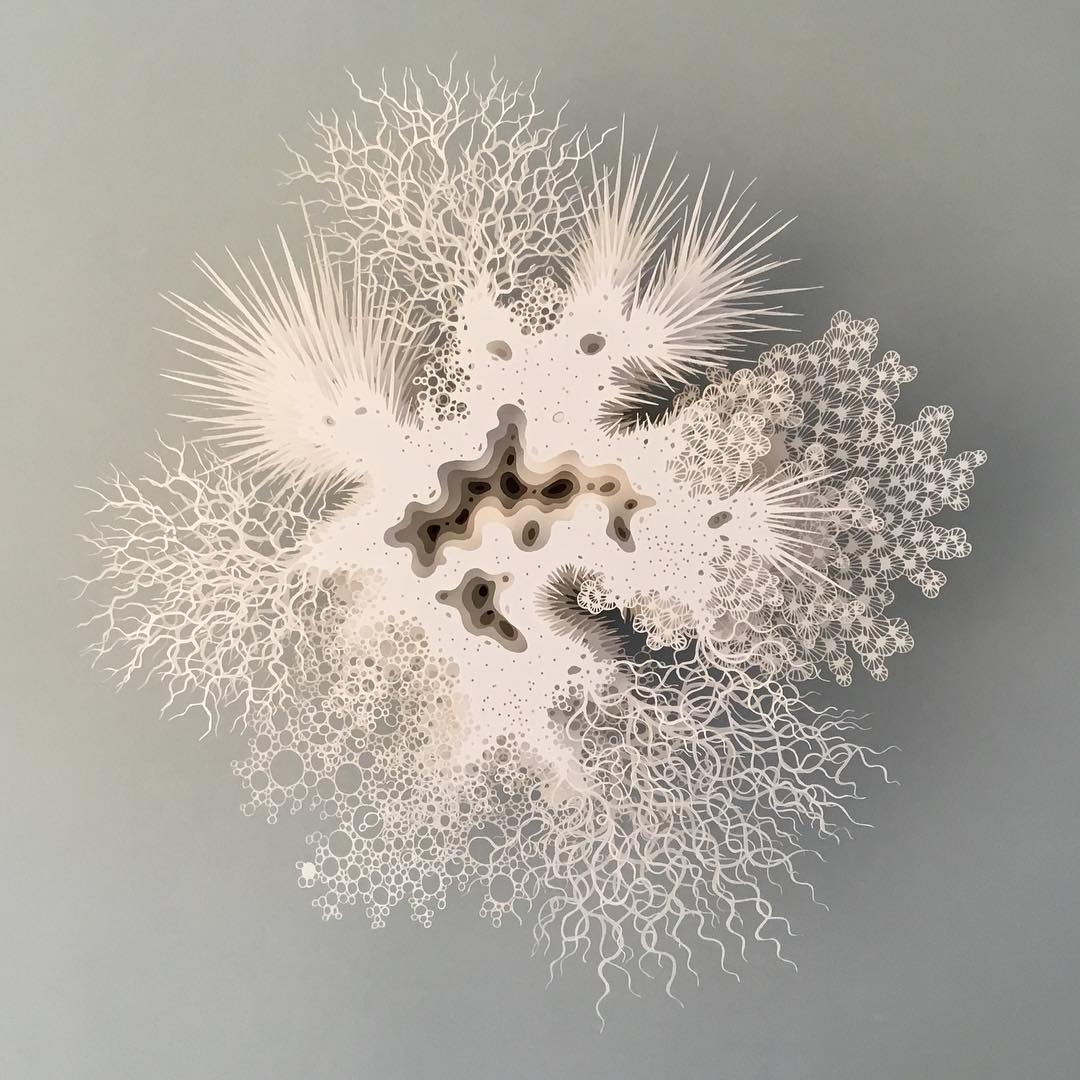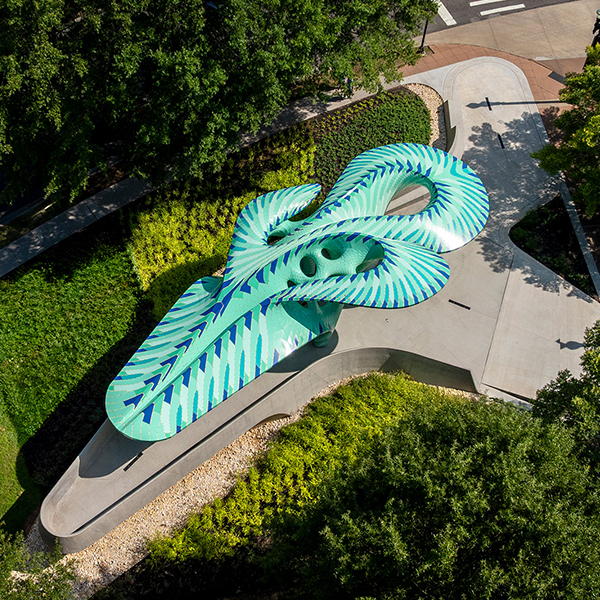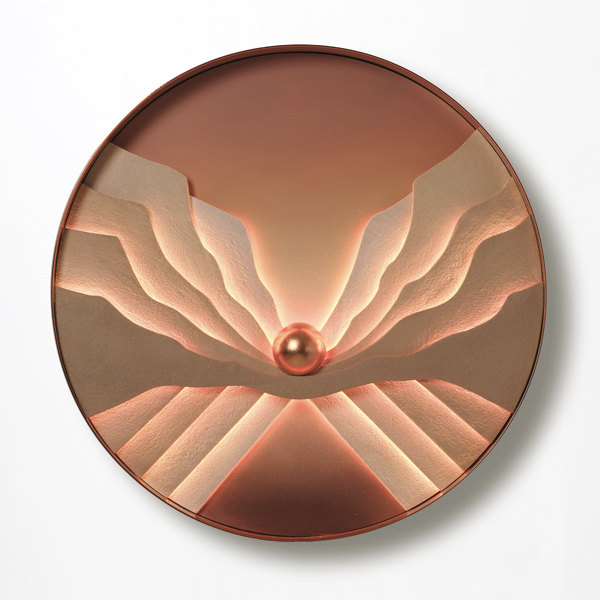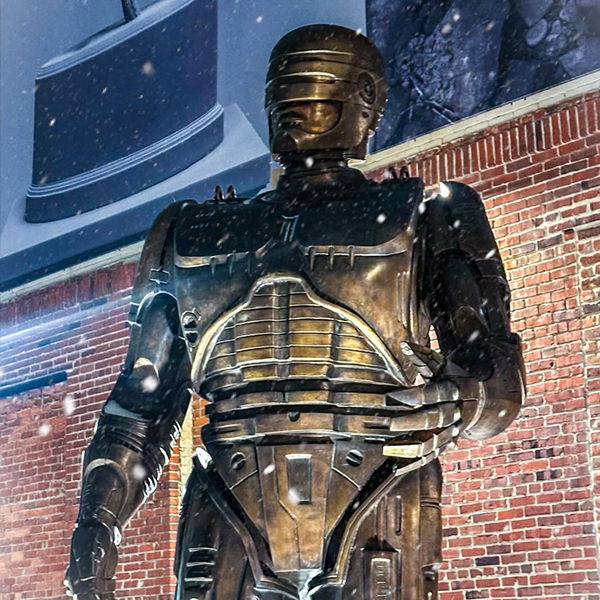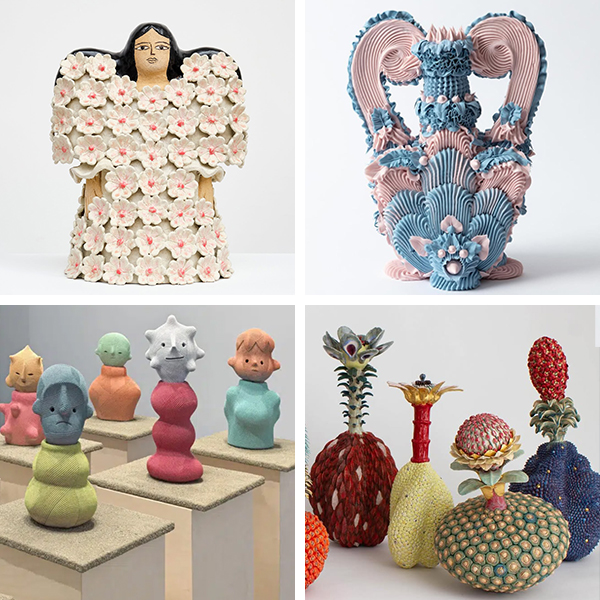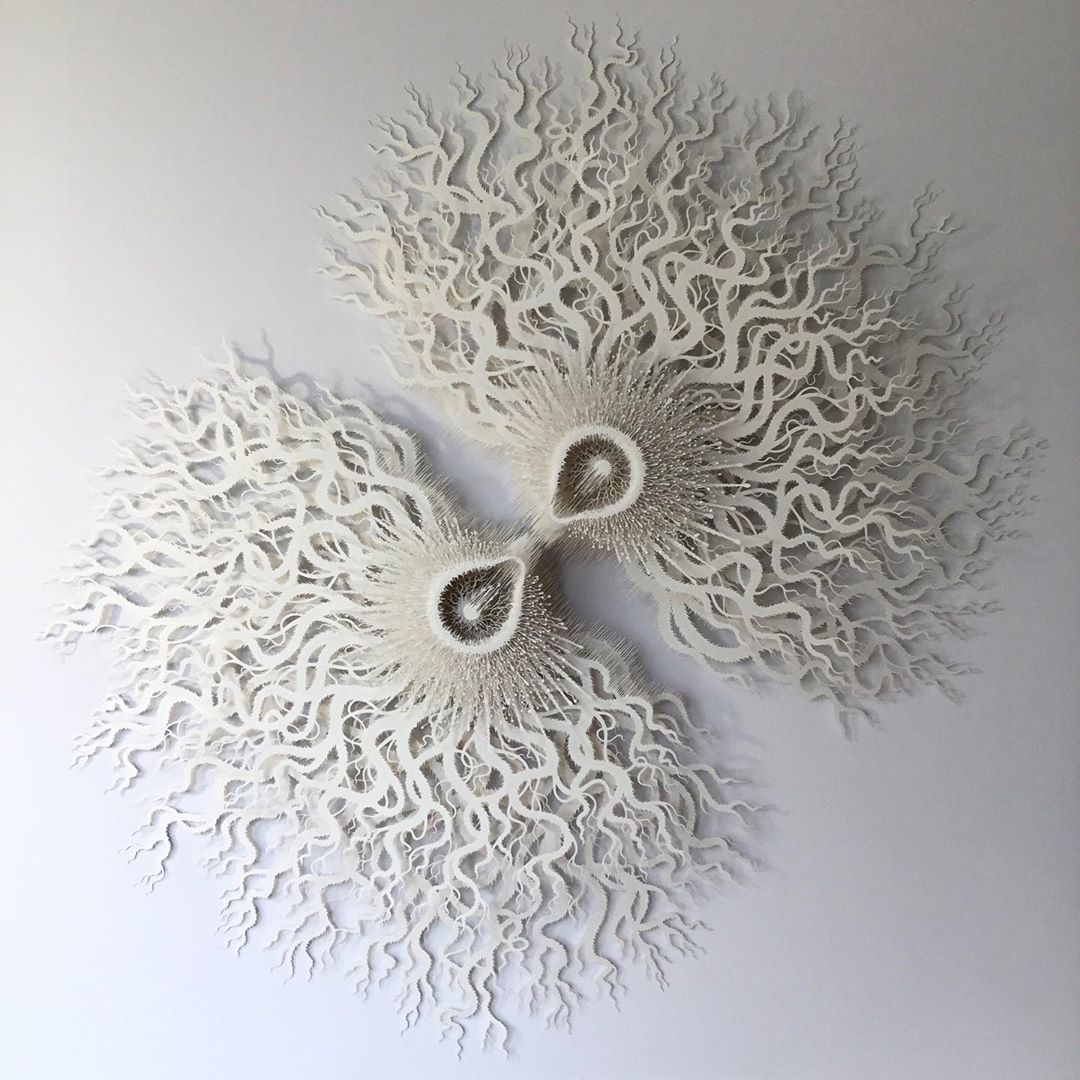
Nature has many fascinating forms, but some of the most interesting structures are too small to be visible to the naked eye. Other than in science books or under a microscope, we don’t have the ability to observe the surprising beauty of living microorganisms, despite them being all around us. However, artist Rogan Brown makes the invisible visible with his incredibly intricate paper sculptures mimicking the shapes and forms of these micro marvels.
Inspired by complex cellular compositions, microbes, and fossils, Rogan magnifies microscopic structures by translating them into extraordinary paper sculptures. A labor of love, each elaborate piece is meticulously hand-cut from white paper using a scalpel. His choice of material emphasizes both the delicacy and strength of nature. Layers of intricately cut white paper draw the viewer in, and encourage us to take the time to admire the vast microscopic forms that are all around us and inside our own bodies.
Two of Rogan’s latest works, titled Cytokinesis Variations, highlight the beauty of the everyday biological process of mitosis (or cell division). “At any given moment, millions of cells in your body are dividing and multiplying in order to replenish and maintain your skin, hair, intestine and bodily organs etc… Cytokinesis is the final and most dramatic stage of mitosis when the cell wall ruptures and splits in two to form identical daughter cells,” Rogan tells My Modern Met. “I have tried to freeze the ultimate moment of transformation and becoming.”
We recently caught up with Rogan to find out more about his inspiration and process. Read on for our exclusive interview.
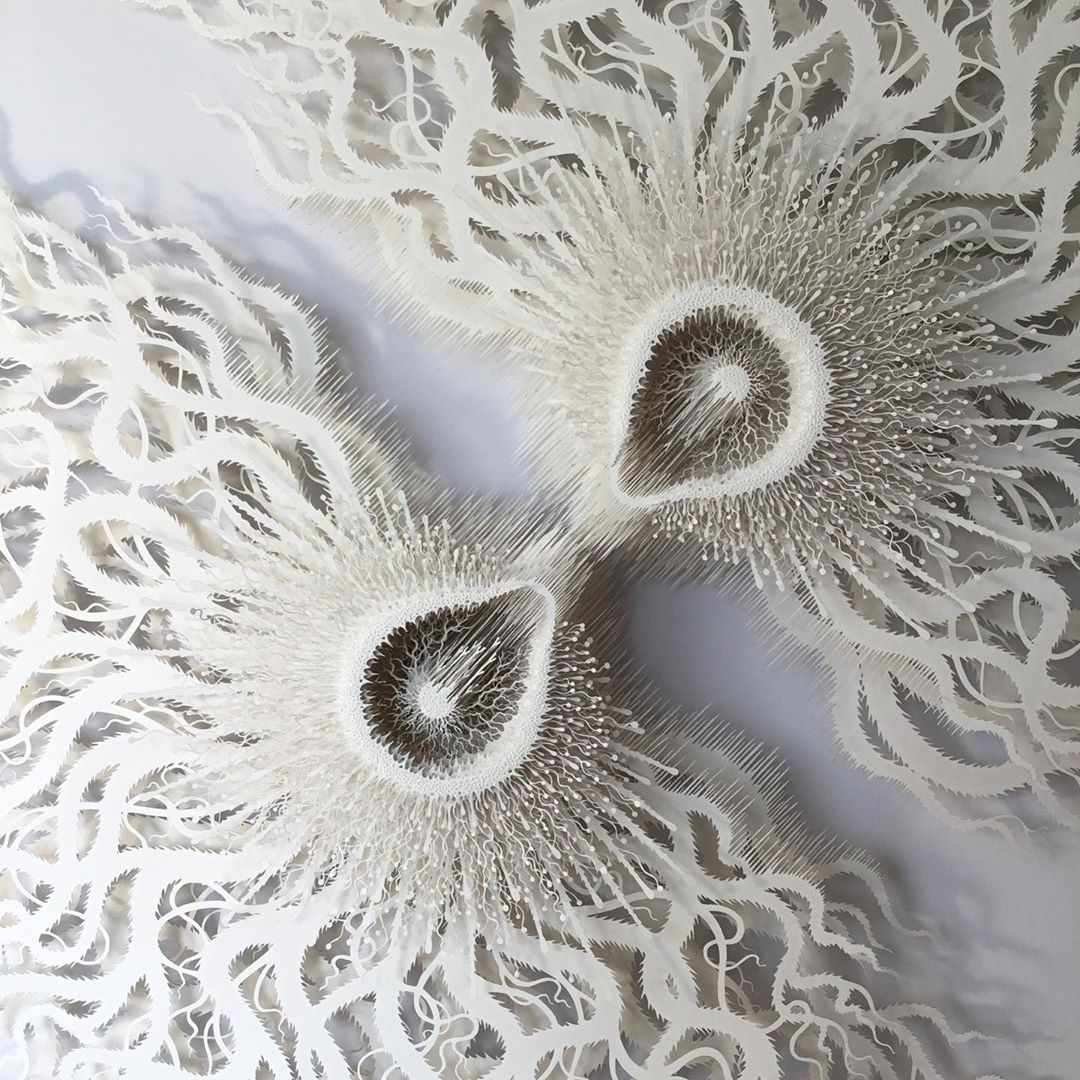
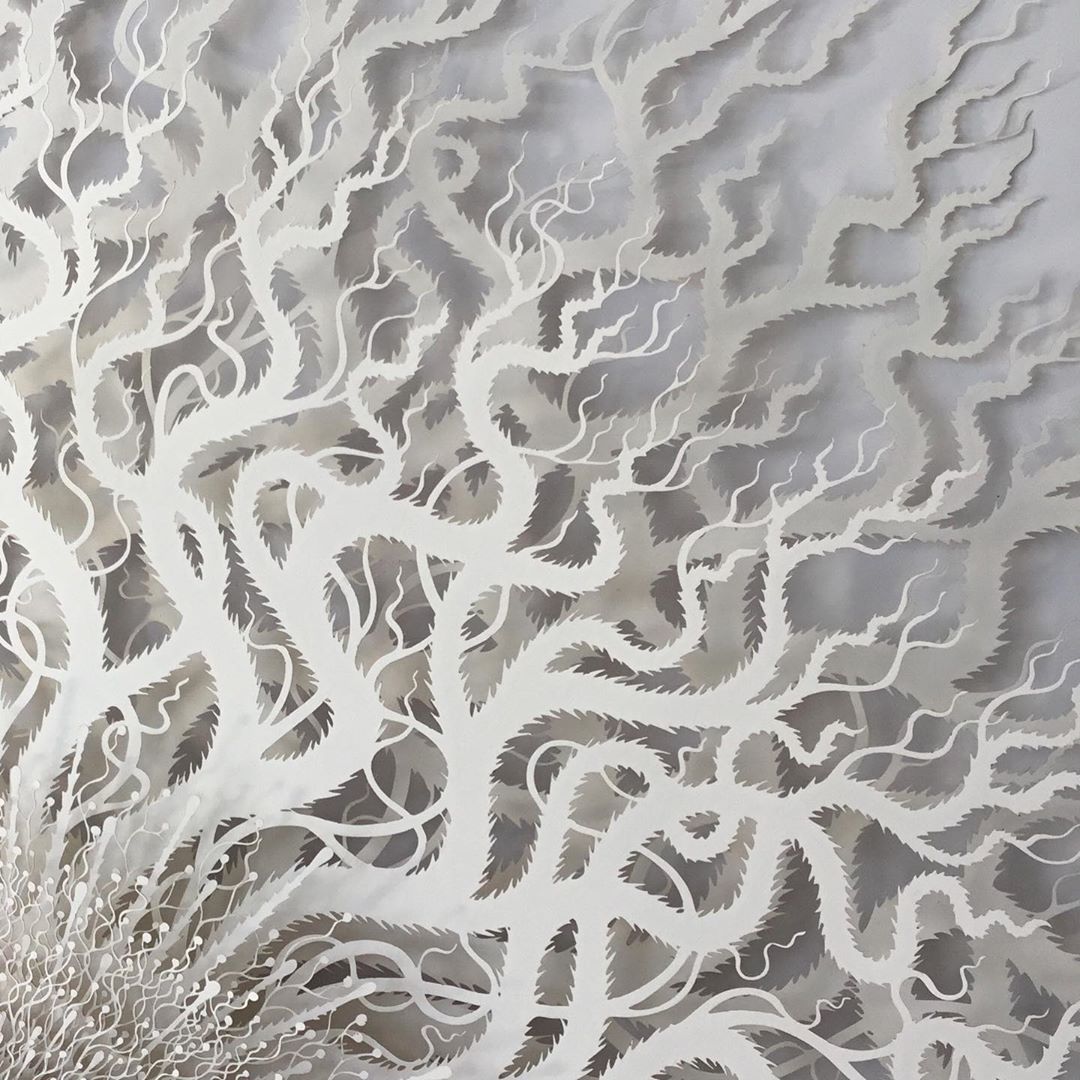
How did your interest in paper art begin and what do you love most about working with the material?
My interest began by accident through experimentation with different materials in the studio. I learned to love paper as a material because it fascinates me. Few other materials can be cut in this way and still retain their structural integrity. Paper is fragile and delicate but also, paradoxically, incredibly strong and durable: the tree is cut and transformed into the sheet but its power and strength is not lost and in my work. I try in some way to restore that power and strength in order to achieve a poetic balance. I use white paper almost exclusively because it confers on the work a ghostly fragile quality, maximizes the play of light and shadow and mimics the aesthetics of electron micrographs. The white on white layers make the work almost disappear and so the viewer has to strain their eyes to see it and this is what the artist must do: push people to open their eyes and take the time to see, breaking free from their habitual ways of looking.
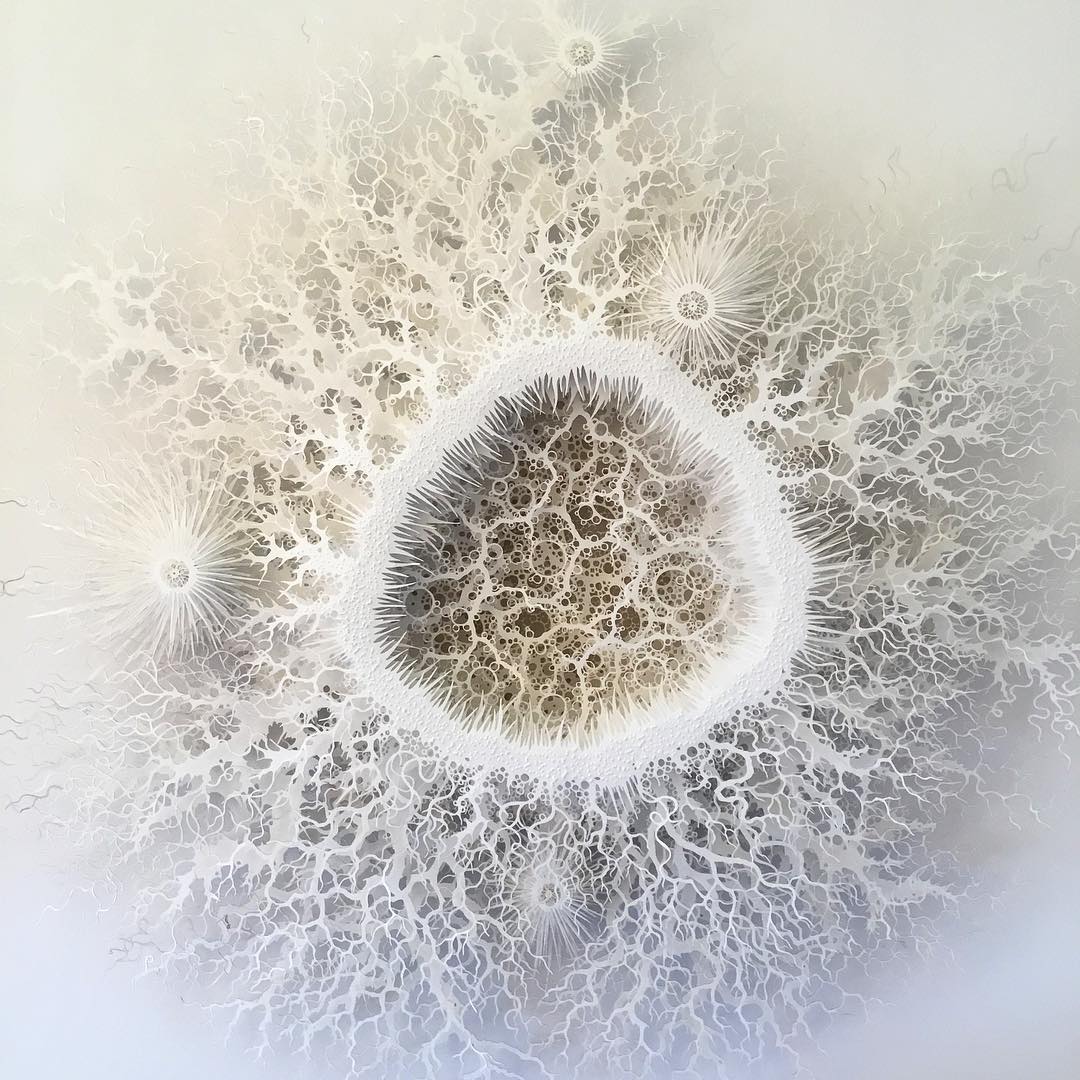

What draws you to depict the complexity of nature?
My sculptures are chimeras mixing shapes and patterns that I observe in nature in different contexts and at different scales. I lived for 10 years in a remote rural region of southern France where I was surrounded by mountains and forest. I spent a lot of time trekking through the landscape sketching, taking photos, trying to see it and engage with it artistically but nature is too vast, too overwhelming, impossible to see all at once, where do you start? With the forest? The tree? The branch? The leaf? The cell structures? The molecules? The atoms?
Everything that surrounds us is made up of collections of smaller things, the volume and scale is terrifying and ultimately beyond our capacity to fully comprehend it. My work seeks not only to explore these ideas but also to embody them.
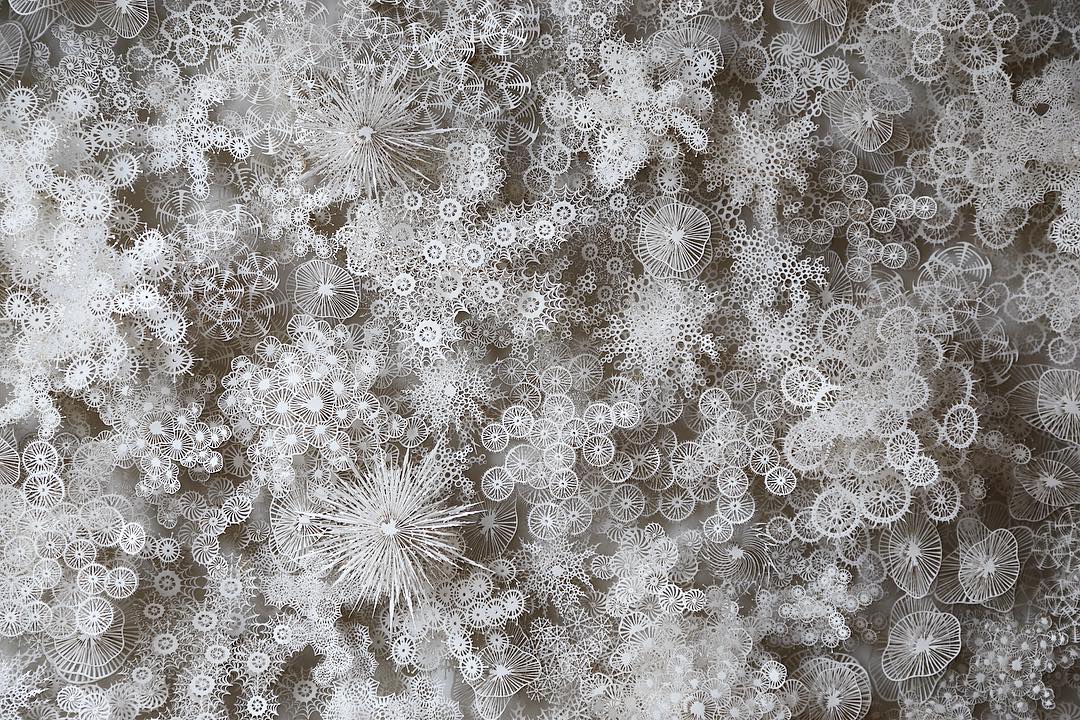
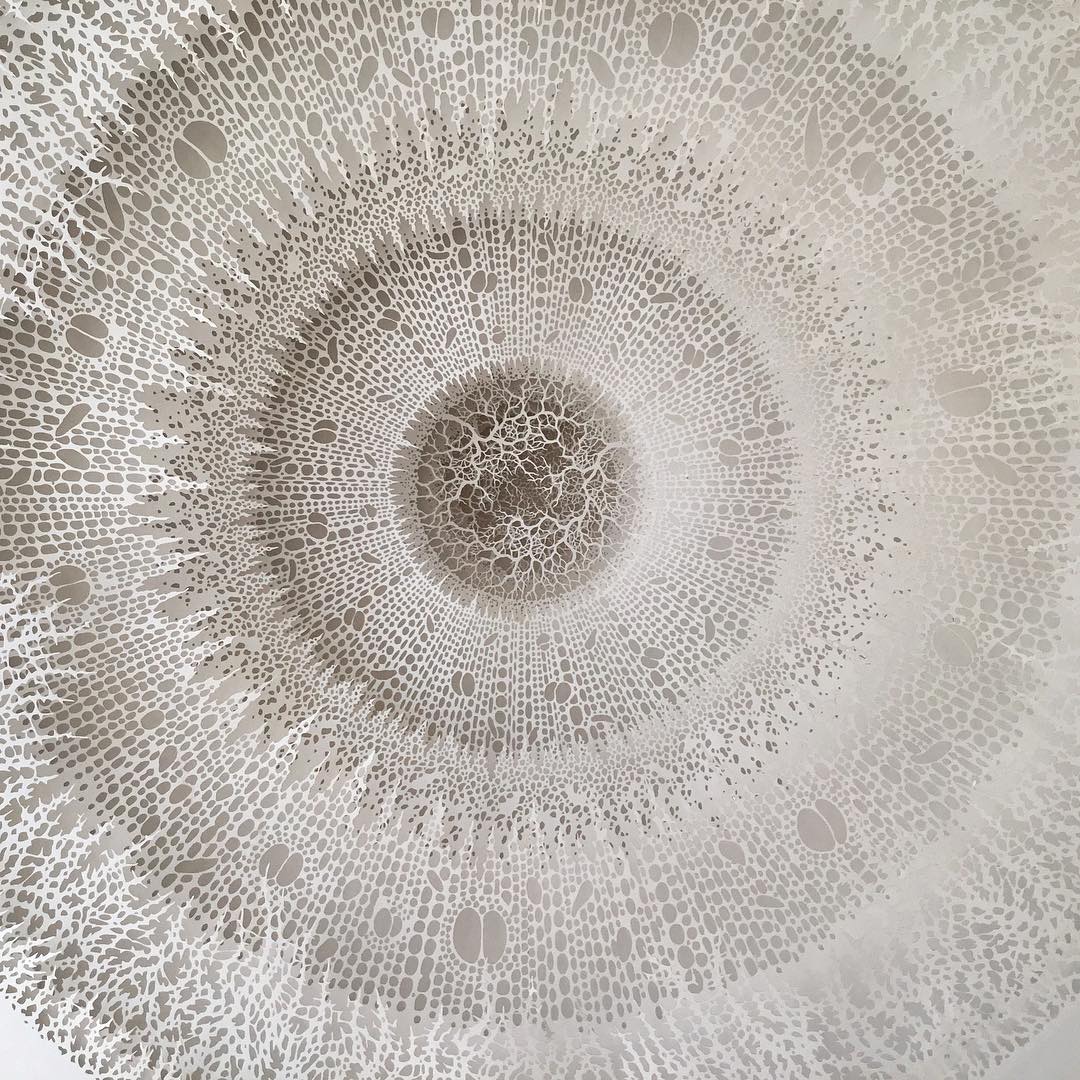
Do you have a background in science?
I do not have a scientific background, but science of course helps us see nature, it reveals the hidden vastness of the universe we inhabit and offers us a means of understanding it and it is therefore an invaluable tool in my work.
What is it about living, microscopic organisms that fascinates you the most?
The fact that I know this vast ecosystem of organisms and structures exists around me, on me, and in me but I can't see it, I can only imagine it. As a visual artist, my goal is to make the invisible visible, to create an accessible paradigm for something that is ultimately beyond our ability to imagine.
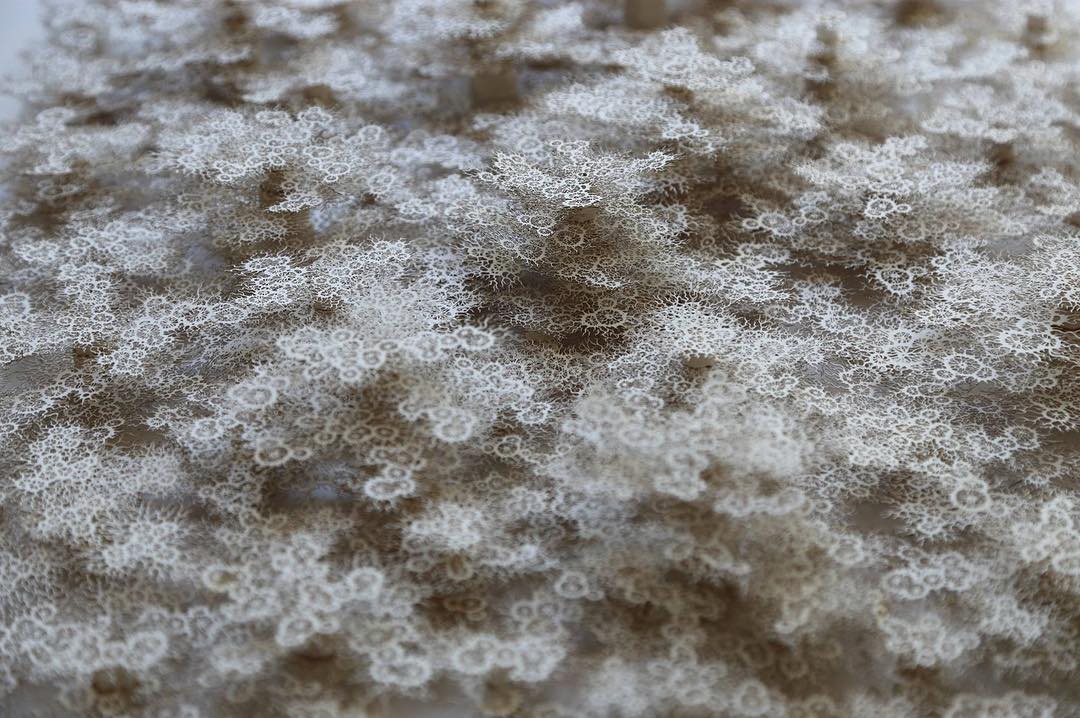
Each work is incredibly detailed. Can you describe your creative process and how long it takes to complete one of your works?
Every piece starts with drawing, the finished work is really a layered three-dimensional drawing. I start with small sketches then work these up into detailed full-scale drawings that are then cut either by hand with a scalpel (e.g. “Cut Microbe” and “Outbreak”) or alternatively with a laser (e.g. Magic Circle Variation). Each cut is then mounted on hidden card and foam board spacers of 1 or 2 cm depth and finally each layer is mounted on top of the other, glued, and pinned in place. Each stage of the process takes weeks and it's therefore labor intensive, especially for the larger hand-cut works that can take several months to produce.
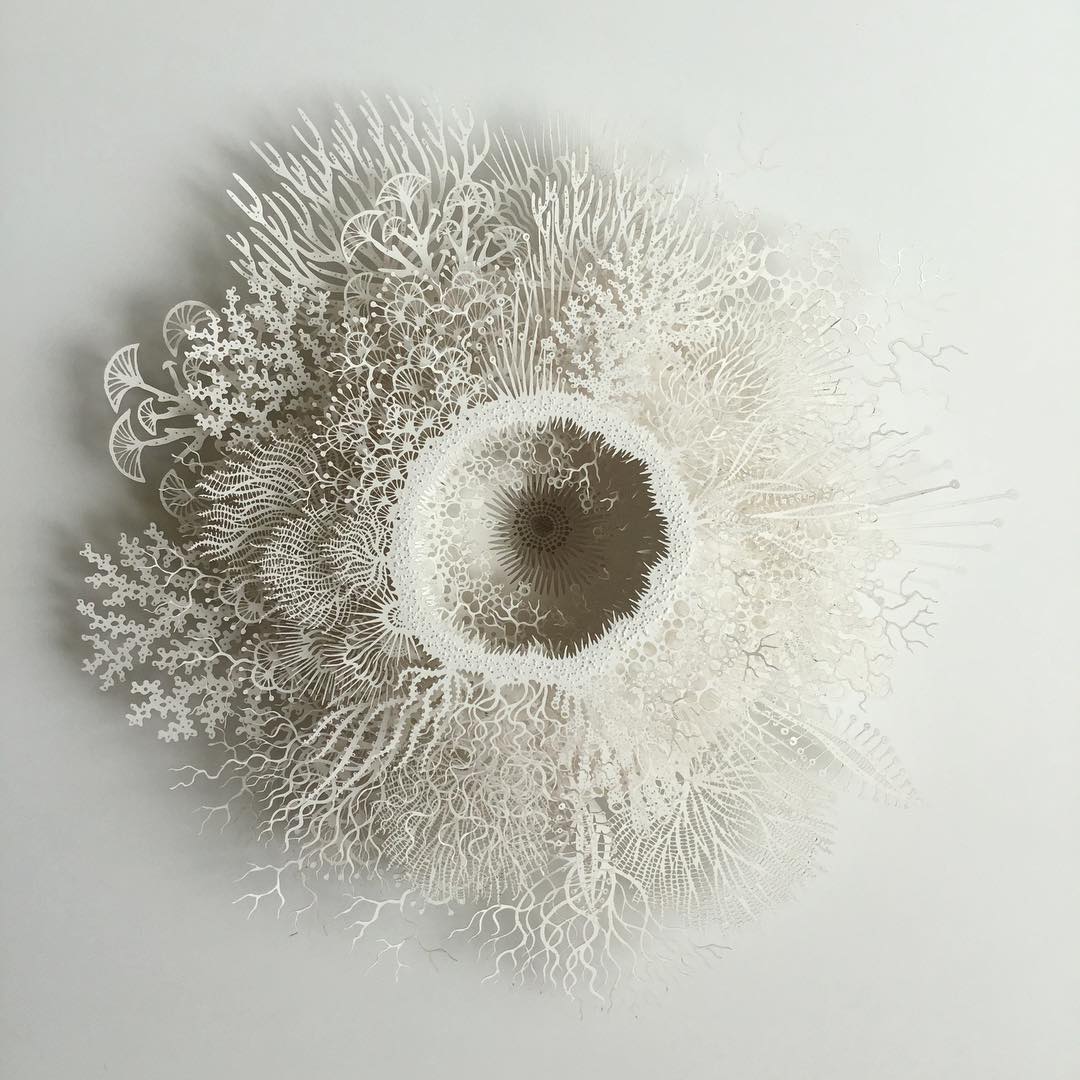
Do you have any upcoming projects you would like to share?
I've been working on a very large-scale piece (10×5 feet) for some years now, inspired by coral reefs and the human body. It's an attempt to convey to people the idea that the natural world that surrounds us is not outside us, it is in us, it is us. If the coral reefs bleach and die, then part of us will die, too. If we don't learn this lesson very soon then some irreversible damage will be done.

